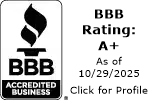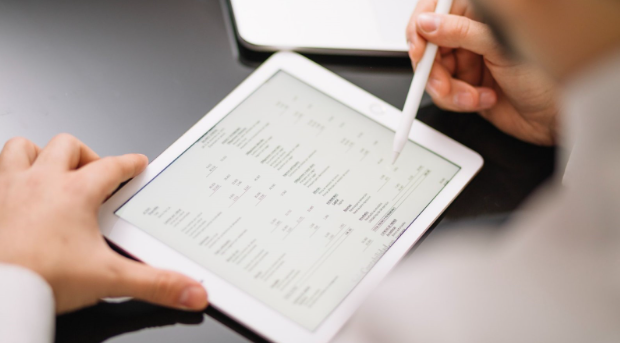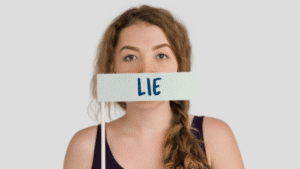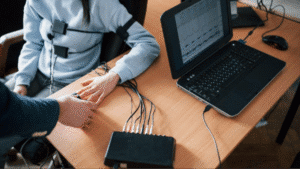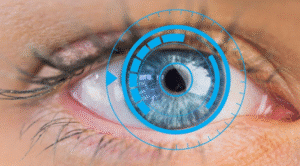Polygraphs occur in three critical stages.
First is the pre-test phase. Also known as the preliminary stage, this phase involves a polygrapher establishing initial contact with the would-be examinee. It allows both parties to build rapport with each other. Besides, the examiner gets to inform the examinee of the upcoming test and obtain their written consent, which is necessary to conduct a credible polygraph exam.
The second stage in lie detector testing is the in-test phase. It’s pretty much where the actual questioning occurs.
Finally, we have the post-test phase. This stage marks the close of a lie detector evaluation and culminates in the preparation of a polygraph report. But what does this document typically include?
Read on as we explore the content of a professional lie detector report.

Unveiling Polygraph Reports
A polygraph report is a document that highlights the outcome of a lie detector test. As mentioned, it’s typically prepared at the conclusion of a polygraph exam.
In professional settings, any polygraph that proceeds to the in-test phase should culminate in a written report—whether the test is completed or terminated early. The document is critical even for tests concluded prematurely for whatever reason.
Take a note that in law enforcement or legal settings, results are typically sent directly to the requesting authority, and disclosure to the examinee is not always required or appropriate.
Are Polygraph Reports Mandatory?
Lie detector reports are mandatory, regardless of the type of testing in question. It’s the only valid proof that a polygraph exam was conducted.
While not legally required in all jurisdictions, a detailed polygraph report is a standard best practice in professional settings. Failure to produce one may indicate poor professional standards or a lack of certification. That can be reliable fraud alert.
Worse yet, shun examiners who promise to compile a report without subjecting you to all three critical polygraph questioning phases.

Essential Elements of a Polygraph Report
1. Examinee’s Name
A polygraph report must identify the examinee by all their official names.
2. Exam Date
A lie detector report must highlight the date the exam was administered.
3. Purpose of Exam
Polygraph tests may help with various types of investigations, including;
- Criminal cases
- Pre-employee screening
- Workplace misconducts
- Immigration and tourism
- Government contracting
- Relationship and infidelity
- Substance abuse
A lie detector report must clearly highlight the test’s purpose.
4. Examinee Admissions
Sometimes, guilty individuals can feel overwhelmed by the weight of their conscience and decide to admit to their offenses. Such statements must appear in each report.
5. List of Scored (Relevant) Questions and Examinee Responses
A professional polygraph report should include only the Relevant questions — those directly related to the specific issue under investigation — along with the examinee’s verbatim ‘Yes’ or ‘No’ responses.
These are the only questions that are scored and evaluated to determine truthfulness or deception.
While Control and Irrelevant questions may be asked during the exam to establish physiological baselines or reduce test stress, they are not scored and thus not documented in the final report.
Example of a Relevant Question:
“Did you take $300 from Mr. Hathaway’s office on Tuesday this week?”
The examinee’s direct answer to this question will appear in the report, forming part of the data used to draw the examiner’s conclusion.
6. Examiner’s Verdict
A polygraph report must highlight the examiner’s professional opinion on whether the examinee was truthful or deceptive. Such inferences depend on the data obtained from relevant and control questions.
A stronger response to relevant than control questions indicates deception, while the converse would suggest truthfulness.
If the pattern of responses for control and relevant questions is similar, an examiner would term the test inconclusive.
7. Definitions
Polygraph questions should be simple and direct to avoid ambiguity. If certain queries included technical or unclear words, an examiner would need to define such terms in the report.
8. Results of Chart Analysis
At the end of a polygraph test, an examiner analyses the charts made by the polygraph instrument while recording each response. Professional analysis should constitute a polygraph report.
9. Examiner Information
A polygraph examiner must append their name and signature to a lie detector report. They should indicate their contact information too, including mobile numbers and email addresses.

Optional Elements of a Polygraph Report
- Type of polygraph instrument used
- Testing format used
- Exam location
- Alternative report versions besides the manual copy of the score sheet
How Reliable Are Polygraph Reports?
Studies on polygraph reliability indicate that the exams can be remarkably accurate if administered under specific conditions.
The best way to conduct a legally defensible lie detector test is to have it administered by an experienced examiner. It’s also important to follow specific industry guidelines, depending on the type of polygraph exam conducted.

How to Ace Polygraph Report Writing Like A Pro
Polygraph reports should be as detailed as they can be. The document should capture all essential information without being too wordy or embellished.
However, the most important thing is to ensure the information is factual. That’s to say, it should accurately highlight the scores for each question and indicate the examiner’s verdict.
The post-test phase often includes a discussion with the examinee to clarify anomalous responses, which may inform—but not necessarily alter—the examiner’s professional opinion.

